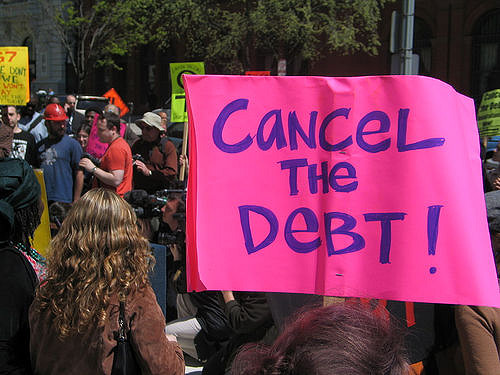
Photo Credit: Friends of the Earth International || Note: the above is just a photo to illustrate a point. I do not endorse debt cancellation under most circumstances. I do support debt-for-equity swaps to delever the system.
Debt, debt, debt… debt is kind of like snowflakes. A single snowflake is a pretty star, but one quintillion of them is a horrendous mess. In the same way, most individual debts are reasonable and justifiable, but when debt becomes a pervasive part of the economic system, the second order effects kick in:
Thus the mess. Bloomberg had an article on the topic recently, where it tried to ask whether and where there might be a crisis. I’ve argued in the last year that we shouldn’t have a major crisis in the US over domestic debts. There are a few areas that look bad:
But those don’t add up to a debt market in trouble as when residential mortgages were on the rocks.
But what of other nations and their debts, public and private?














Leave A Comment